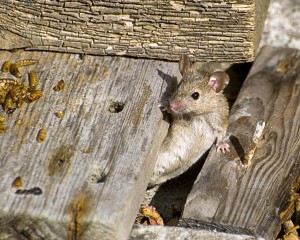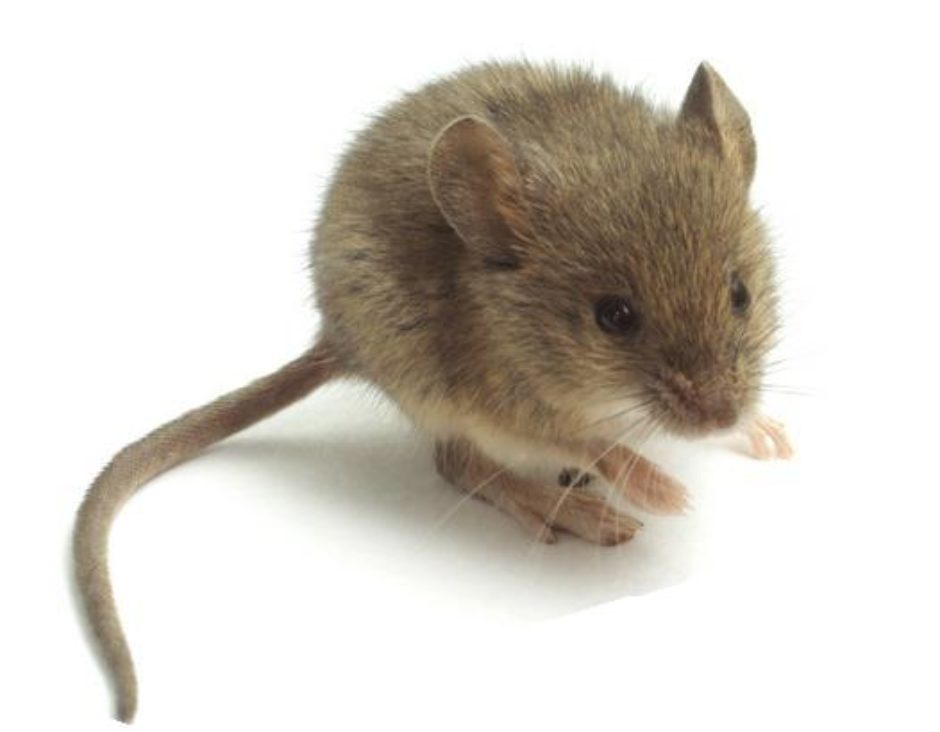 Our friend the house mouse is often found in areas outside of the home like fields, sheds, wood piles, behind hedges and bushes, living happily outside of our common areas. The house mouse eats plants, seeds, and bugs and builds its home or nesting areas out of soft vegetation or leaves. They will be happy to move into a missing brick in a wall, and exist with a large community if the area permits such a group. Because the house mouse needs warm temperatures, and does not hibernate, the change in seasons will bring on changes to the decisions the house mouse makes, to ensure that they survive the coming cold months.
Our friend the house mouse is often found in areas outside of the home like fields, sheds, wood piles, behind hedges and bushes, living happily outside of our common areas. The house mouse eats plants, seeds, and bugs and builds its home or nesting areas out of soft vegetation or leaves. They will be happy to move into a missing brick in a wall, and exist with a large community if the area permits such a group. Because the house mouse needs warm temperatures, and does not hibernate, the change in seasons will bring on changes to the decisions the house mouse makes, to ensure that they survive the coming cold months.
Looking for warmth of temperatures between 65 degrees and no more than 80 degrees can be a tricky task. The humidity in the air must be at least 55 degrees as well. And, when you couple the fact that a mouse must eat each day, they are often looking for a perfect world, and that really is your home.
Dispersal of House Mice from Your Home
The exploration begins with the outside of your home. Looking along the bottom of the ground to no more than a couple of feet up, the house mouse will climb and smell for open warm currents, food scents and the crack that will allow a push of its skull into a space of even 1/4″. They look for pipes that hold a small entrance, and follow the heat and food smells. The fact is, if you prevent mice from entering your home with simple caulking technology, and the addition of peppermint smells on the outside and inside your home, you have created a difficult position for most mice. They cannot get in if they continue to search for warm currents of air, and find none available, and will move on to your neighbors homes.
Once a mouse finds an entrance, he or she will urinate to indicate the highway of home to other mice. The urine tracks can be easily seen with a black light, or an Ultraviolet light. You can use this UV light to caulk easily, if you already have such a highway created. The fact is, you want to discourage the new inhabitants, even if you have an existing house mouse population in your home.
Mice can travel over 1 mile to search out homes or buildings to save them from low food stocks and cold weather. The fields of a farm are full of hobo mice, traveling to your farm house, looking for a way to get in. If you have not caulked in a while, a UV light and a caulk gun are great defensive items, and will ensure that the mile they have walked is the mile in vain.
Importation from Grocery and Supply Trucks
The front door is another way that the house mouse can find entry, as they are often found roaming around truck stops, and other commercial loading areas, where food is plentiful. The house mouse is often in many of our commercial transport areas and trucks, and is often on the rail system as well. The boxes and crates of food and stored soft good items, often carry nests and little ones with their parents. Easily hitching to our local retail environments, the mice that tag along with such stocks, are often ready to explore their new environment, and bring with them, strong genes for new breeding that will produce healthy babies.
Town-homes and Apartment Complexes
Your local apartment building is the mega housing complex for most house mice. When you move into the complex, inquire about their rodent removal process and plan. Look for outside bait boxes and traps, to see that they have commercial trapping plans in place. The combination of outside non-caulked areas of the complex, and the many hitchers that can ride into the front door of the complex with your neighbor’s supplies, the house mouse can really benefit from this uncontrolled plan of many human’s living together.
If their is a restaurant on the lower level of your apartment building, the chance of house mice infestation is very high. The high amount of piping, utility wires and tunneling that reside within the halls and walls of an apartment complex, make for easy traffic from one food full apartment to another. Even if you are a good mouse prevention expert, chances are, one of your neighbors will not be, and the food is available, and the warmth factor is covered, with many areas to nest and live.
Over the length of the fall and winter months, the infestation in such communal buildings can be quite large. The only prevention methods used by most apartment dwellers are trapping methods, as they may not have utility access, or the ability to prevent the entrance with caulking and information to neighbors.
If you have an infestation, your health is in danger. The education of your property company, and the neighbors is the first step. Then, a plan of prevention and trapping is in order. With the new information, you can create a clean and mouse free apartment, that will eventually smell and feel better, as mice create quiet a lot of debris and fecal matter.
Mice in the walls can be seen when any building is torn down, and you will often find the problem simply relocates, as the need for food and warmth is very dire. The mice will search with warm currents and food smells. Ensure your home and office has these currents covered with caulking and peppermint.
It is hard to remove mice from urban areas, as humans build large intricate utility areas underground and in construction areas, which are not often visited by humans after the building is completed. These become the highways of the city mouse, and they are often nesting and housing areas in a pinch. The problem with the pipes and utility areas are they are often too noisy for mice, and they do not like the electrical noise or water pipe noise that is constantly running through such installations. They will use them to move sight unseen, from one hospitable building to another, and find their new mate or nesting area via this highway.
Nesting is the Key to Understanding Mice
When you build a home, think about the covered areas of your insulation and how those areas can be covered and caulked. It is important to build your home with areas between the environment and the living areas, and as well, how those areas are tightly covered. The small step of keeping a tight enclosure on insulation, can create an inability for your house mouse to nest.
But even then, without walls or insulation areas, the drop ceiling you have installed is a perfect nesting area, as the warmth is often in the ceiling. The stock of toilet tissue in your store room, creates a perfect nesting material, with an easy way to grow a rising mouse family. The beach towels you store in the closet, are a comfy and easy mouse nest. The hot water heater can be a nice nesting area, as it is warm, and not often too noisy.
Female mice clean and nest to protect the new mice she births, and she can have up to 48 mice in a year’s time. This new population is available to have their own young within a few weeks. Within this time, your home can become burdened with these new dwellers in a very short period of time.
Adding trapping plans to your home, peppermint in storage areas, as well as electrical frequency boxes that mice hate, you can remove this population. Be sure to search through our site to find the best plan for your situation!
Remember, a plan of action is only as good as the information you have to put it together, so learn where they are coming in, find out where they are nesting, trap and continue to make the trapping interesting to remove them, and continue until you are convinced you have solved the problem. Be diligent and persistent on your mouse problem, as they are intelligent and will make your home unhealthy and very dirty with their constant feeding and marking.
